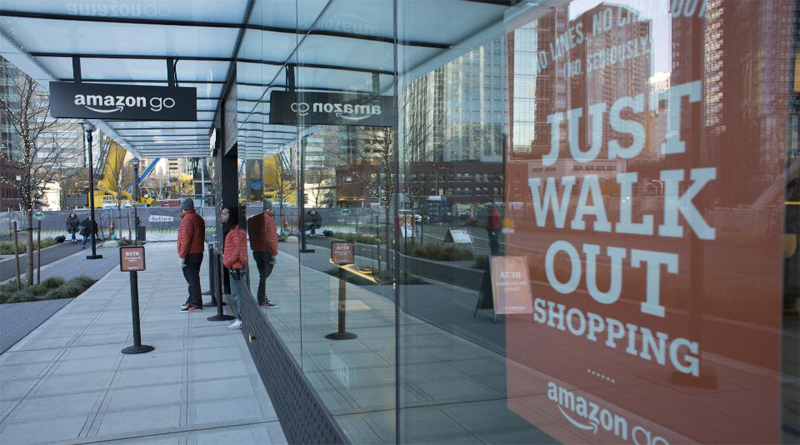Consumers continue to seek out convenience that suits their fast-paced lifestyles. Consumer behavior could reverse, but it is unlikely. What’s more likely is that things will only grow more intense and the demand for convenience will only grow more extreme. Fast-moving consumer goods and pharmaceutical products benefit from the cost-to-performance ratio advantage offered by rigid plastics manufacturing. That is to say, consumers would have to wait longer, and pay higher costs while doing more damage to the environment and our planet’s natural resources, if we were to abandon rigid plastic packaging. These items are recyclable and a resource if we make them so. This should be the focus, rather than upending the global economy to trade one environmental challenge for a much larger one.
Contrary to popular belief, when you look at different material options, plastics are often the sustainable choice when the entire product lifecycle is considered. For example, when comparing plastic bottles to glass bottles, plastics are shatterproof and lighter than glass bottles, saving transportation costs, fuel and carbon emissions when being delivered to grocery stores for purchase. They also reduce product loss. Sure, these companies are looking for containers that the public considers more sustainable, but the most sustainable option is made out of plastic.
Rigid Sustainability
In terms of sustainability, manufacturers are supporting new pilot projects to find out how to make the most of plastic products that have been disposed of. Last year, industry leaders came together to sponsor the Pacific Northwest Secondary Sorting Demonstration Project. This project involved bringing Titus MRF Services technology from its California facility to Portland, Oregon. This technology, a portable secondary sorting system, sorted even more materials from four regional materials recovery facilities (MRFs) and saved valuable resources from going to the landfill. The results from this project suggest that installing a secondary sorting system in regional MRFs would increase material recovery or landfill diversion by more than 100 million pounds per year. Project partners included the American Chemistry Council, Americas Styrenics, Berry Global, the Carton Council, LyondellBasell, Metro, Milliken, PLASTICS and Titus MRF Services.
Several corporations are introducing new options for rigid plastic packaging and products that rely on post-consumer recycled materials. Several Plastics Industry Association (PLASTICS) members offer consumers options. Berry Global recently expanded its VerdantTM packaging line, which incorporates post-consumer recycled resin into products such as bottles, tubes and jars. And Placon Corporation uses its EcoStar recycled PET material from an in-house facility in its PET stock product lines — allowing Placon to divert more than 120,000 pounds of PET from being landfilled every day. Amcor’s AmLite Ultra Recyclable is another line of ultra-high metal-free high-barrier packaging. It’s a recyclable packaging solution that allows customers to create an attractive package design while keeping the product fresh.
One of the strengths of the U.S. plastics industry is that its value chain innovates continuously. This is particularly true in rigid packaging, considering that some packaging applications address consumer safety — such as food packaging — and convenience. There can and will only be more product developments in rigid packaging using a single material as opposed to multiple materials. In fact, it has been happening already, although consumers probably haven’t noticed. Examples include the aerosol marketplace. In addition to meeting safety standards and consumer’s needs for convenience, single-material packaging is also perfect for recycling.
Looking Ahead
Since the plastics industry is a mature industry, its growth will track the gross domestic product (GDP). In the U.S., where a substantial amount of rigid packaging is used and produced, the GDP is expected to remain stable in the extended growth cycle of the U.S. economy. By extension, it is reasonable to expect that demand for consumer goods using rigid packaging will grow and stay positive.
Plastics forecasts a 2.2% increase in U.S. personal consumption expenditures in nondurable goods, which is where most rigid packaging is used, in 2020. Rigid packaging is also used in the services sector. Consumption of services this year is projected to grow by 2.0%. It is reasonable to expect that rigid packaging business activity will be expanding at least by 2.3%, in line with the total personal consumption expenditure growth forecast this year. This forecast is also in sync with packaging and labeling services in the U.S. that are projected to grow at 2.4% from 2019 through 2024.
The plastics industry will track global output, estimated at 3.3% this year. It is safe to say, conservatively, that growth in rigid plastics packaging will also be around 3.3%. However, the economic growth rate will vary by region and by country. For example, growth in emerging and developing Asian countries is projected to increase by 5.8%, while growth in European areas is expected to grow by 1.3% in 2020. It is important to keep in mind that in the plastics industry the world is our market — and this theory applies to rigid packaging.
Source: Packaging Strategies








